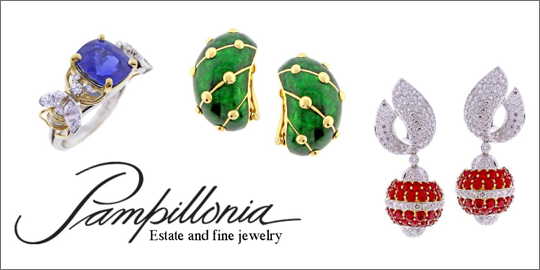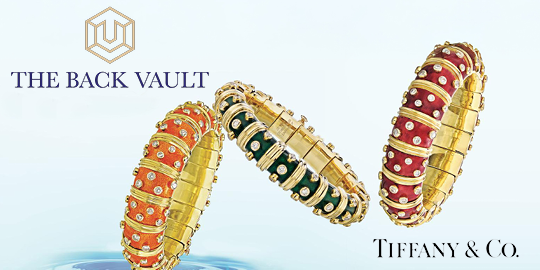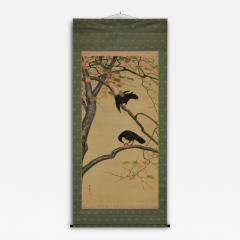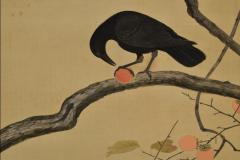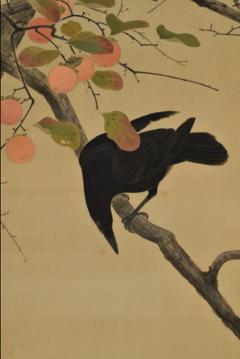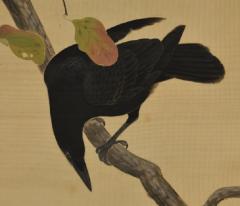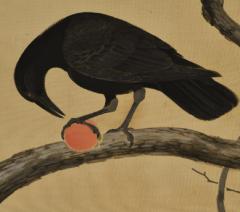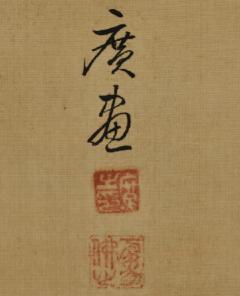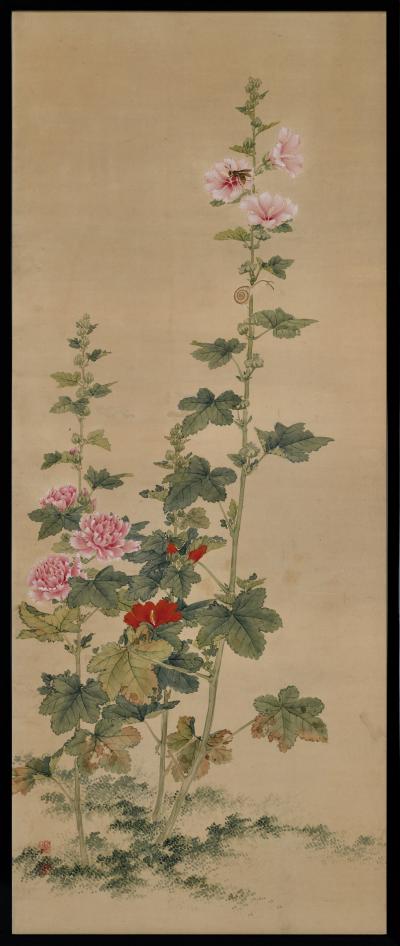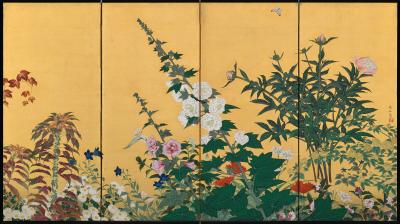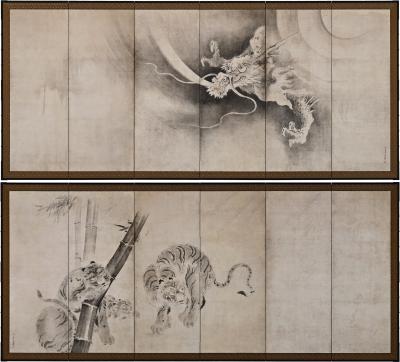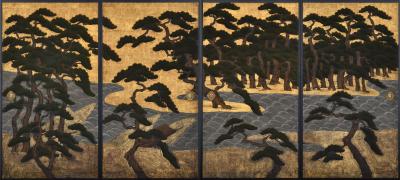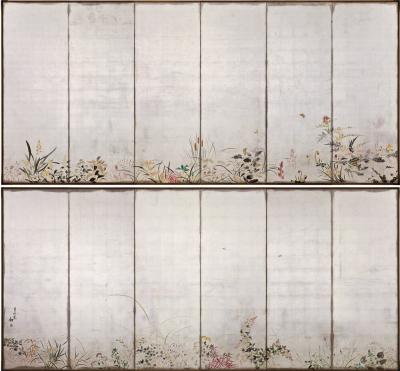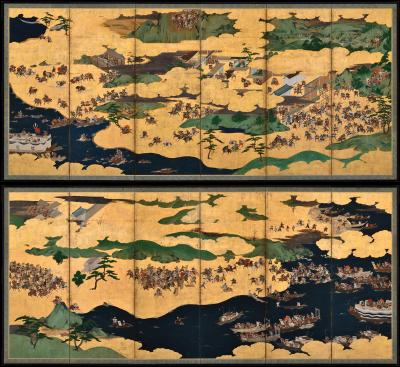Early 20th Century Japanese Nihonga Scroll. Crow & Persimmon.
-
Description
Anonymous
Crows & Persimmon
Taisho era, Circa 1930
Japanese Scroll. Pigments and Ink on Silk.
Dimensions:
Scroll: H. 235 cm x W. 106 cm.
Image: H. 168 cm x W. 86 cm.
Price: USD 9,500
Bird and flower paintings are often linked to specific seasons and are used to represent the changing of nature throughout the year. In this work the ripened persimmons mark the season as late autumn. Here the artist has framed a pair of crows with an arc of persimmon and changing fall leaves.
The crows have been brushed in great detail and sharp focus in contrast to the softer forms of the leaves and fruit. The negative space surrounding them further enhances their intense realism. The branches are brushed with an eye to realism and naturalism, yet their lines and abrupt angles are beginning to exhibit some of the geometric organization of the 1930’s. A sunny naturalism flourished in Japanese painting in the first decades of the 20th century. This reached its height in the 1920s, and then quickly faded, supplanted by a mood of abstraction and stylization. By the early to mid 1930’s the individual expressive liberties that had informed the Taisho era (1912-1926) were being reined in and replaced with works of strong linearity and the flat application of saturated colors. This work serves as a link between the two distinct painting eras, effectively conveying the unbridled naturalism of the past and allowing us a glimpse into the more rigidly stylized future.
This oversized painting was most likely painted for exhibition. The signature and top seal read ‘Hiro’; the lower seal ‘Shofutsushi’. We haven’t been able to trace the artist. It is a common problem with works of the era as the disruption of imperialism and war cast a long and deep shadow over Japan. This elegant expression of a natural motif is painted firmly in the traditions of Nihonga. Nihonga, which literally means “Japanese-style painting,” was a response to the Western influence that was prevalent during the late 19th and early 20th centuries but aimed to maintain and celebrate Japan’s artistic heritage. Nihonga artists continued to employ traditional Japanese painting techniques, materials and subject matter though began to experiment with color palettes, compositions and brush techniques. -
More Information
Period: 1900-1919 Condition: Good. Styles / Movements: Asian Art Incollect Reference #: 768121 -
Dimensions
W. 41.73 in; H. 92.52 in; W. 106 cm; H. 235 cm;
Message from Seller:
Kristan Hauge Japanese Art, based in Kyoto's museum district since 1999, specializes in important Japanese screens and paintings for collectors, decorators, and museums worldwide. Contact us at khauge@mx.bw.dream.jp or +81 75-751-5070 for exceptional access to Japanese art and history.









